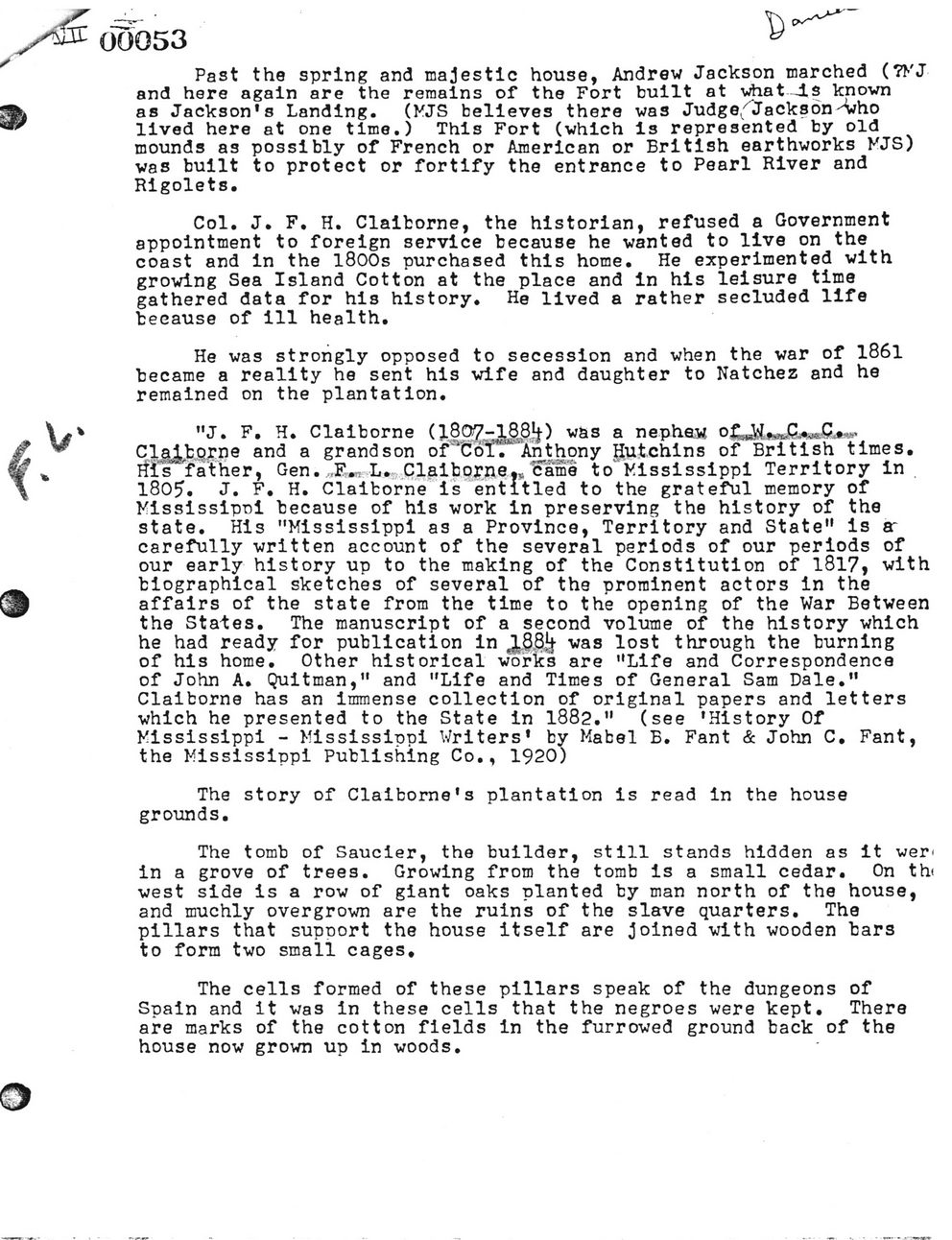This text was obtained via automated optical character recognition.
It has not been edited and may therefore contain several errors.
00053 Past the spring and majestic house, Andrew Jackson marched (7>'J and here again are the remains of the Fort built at what JLs known as Jackson's Landing. (MJS believes there vas Judge^ Jacks on-'who lived here at one time.) This Fort (vhich is represented by old mounds as possibly of French or American or British earthworks MJS) vas built to protect or fortify the entrance to Pearl River and Rigolets. Col. J. F. H. Claiborne, the historian, refused a Government appointment to foreign service because he wanted to live on the coast and in the 1800s purchased this home. He experimented with growing Sea Island Cotton at the place and in his leisure time gathered data for his history. He lived a rather secluded life because of ill health. He was strongly opposed to secession and when the war of 1861 became a reality he sent his wife and daughter to Natchez and he remained on the plantation. "J. F. H. Claiborne (1807-^8,8l|) was a nephew o^C^C*,,-Claibprne and a grandson ofAnthony put.chins of British times. Si?s'father, Gen. ?Fr^ L.: Claiborne.t Same to'Mississippi Territory in 1805. J. F. H. Claiborne is entitled to the grateful memory of Mississippi because of his work in preserving the history of the state. His "Mississippi as a Province, Territory and State" is ar carefully written account of the several periods of our periods of our early history up to the making of the Constitution of 1817, with biographical sketches of several of the prominent actors in the affairs of the state from the time to the opening of the War Between the States. The manuscript of a second volume of the history which he had ready for publication in JJSJj was lost through the burning of his home. Other historical works are "Life and Correspondence of John A. Quitman," and "Life and Times of General Sam Dale." Claiborne has an immense collection of original papers and letters which he presented to the State in 1882." (see 'History Of Mississippi - Mississippi Writers' by Mabel B. Fant & John C. Fant, the Mississippi Publishing Co., 1920) The story of Claiborne's plantation is read in the house grounds. The tomb of Saucier, the builder, still stands hidden as it wen in a grove of trees. Growing from the tomb is a small cedar. On th( west side is a row of giant oaks planted by man north of the house, and muchly overgrown are the ruins of the slave quarters. The pillars that support the house itself are joined vith wooden bars to form two small cages. The cells formed of these pillars speak of the dungeons of Spain and it was in these cells that the negroes were kept. There are marks of the cotton fields in the furrowed ground back of the house now grown up in woods.

Claiborne, J.F.H Claiborne-J.F.H-132